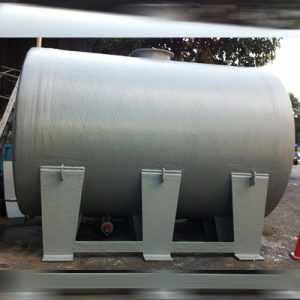FRP tanks, or Fiberglass Reinforced Plastic tanks, are essential components in various industries, offering durability and corrosion resistance. Understanding how to maintain FRP tanks is crucial for ensuring their longevity and optimal performance.
What are FRP Tanks?
FRP tanks are constructed with a combination of fiberglass and plastic materials, making them resistant to corrosion and suitable for storing chemicals, water, and other liquids. Their versatility makes them a preferred choice in industries where corrosion-resistant storage is paramount.
Importance of Proper Maintenance
Proper maintenance of FRP tanks is essential to prevent issues such as leaks, cracks, and degradation of materials. Routine care ensures the tanks continue to function efficiently and comply with safety standards.
Assessing FRP Tanks
To effectively maintain FRP tanks, a comprehensive assessment is crucial. Visual inspection and ultrasonic testing are key components of this process.
Visual Inspection
Regular visual inspections help identify any visible damage, such as cracks, surface irregularities, or signs of chemical exposure. Early detection allows for timely repairs and prevents further deterioration.
Ultrasonic Testing
Utilizing ultrasonic testing provides a more in-depth analysis of the tank’s internal structure. This non-destructive method helps identify hidden defects, ensuring a thorough evaluation of the tank’s integrity.
Identifying Surface Damage
Understanding the nature of surface damage is crucial. Whether it’s abrasions, scratches, or discoloration, identifying the type of damage guides the appropriate maintenance and repair procedures.
Cleaning and Decontamination
Proper cleaning and decontamination are vital aspects of FRP tank maintenance.
Proper Cleaning Procedures
Follow manufacturer-recommended cleaning procedures to remove residues and contaminants. This prevents chemical reactions, maintains material integrity, and ensures the tank remains suitable for its intended purpose.
Dealing with Contaminants
Identify and address contaminants promptly. Whether it’s chemical spills or microbial growth, timely intervention prevents further damage and maintains the tank’s hygiene.
Maintenance Schedule
Establishing a regular maintenance schedule is imperative for the effective care of FRP tanks.
Regular Inspection
Frequent visual inspections should be conducted to catch any issues early. Implementing a routine inspection schedule prevents unexpected failures and ensures continuous tank functionality.
Scheduled Cleaning and Repairs
Plan scheduled cleaning and repairs based on the tank’s usage and environmental factors. This proactive approach prevents major issues and prolongs the tank’s lifespan.
Common Issues and Solutions
Understanding common issues associated with FRP tanks helps in implementing targeted solutions.
Cracks and Leaks
Addressing cracks and leaks promptly prevents fluid loss and potential environmental contamination. Professional repairs are recommended to ensure the structural integrity of the tank.
Corrosion
Despite being corrosion-resistant, FRP tanks may face corrosion challenges. Identify and treat corrosion spots early to prevent further deterioration.
Fading and Discoloration
Surface fading and discoloration can affect the tank’s aesthetics. Protective coatings and proper cleaning can address these issues, preserving the tank’s appearance.
Protective Coatings
Applying protective coatings is a proactive measure for FRP tank maintenance.
Importance in FRP Tank Maintenance
Protective coatings provide an additional layer of defense against external elements, enhancing the tank’s resistance to chemicals, UV rays, and physical damage.
Types of Coatings and Their Applications
Explore different coating options based on the tank’s application. From epoxy to polyurethane coatings, each serves a specific purpose in safeguarding the tank against environmental stressors.
Safety Measures
Implementing safety measures is paramount when maintaining FRP tanks.
Handling Chemicals Safely
Adopt safe practices when handling chemicals during maintenance. Use appropriate equipment and follow industry guidelines to minimize risks.
Personal Protective Equipment (PPE)
Wearing suitable personal protective equipment, including gloves and eyewear, is crucial. Prioritize safety to prevent accidents during maintenance activities.
Environmental Impact
Consider the environmental impact of FRP tank maintenance.
Recycling and Disposal of FRP Tanks
When it’s time to retire an FRP tank, explore recycling options to minimize environmental impact. Proper disposal procedures contribute to sustainable waste management.
Eco-friendly Practices in Maintenance
Opt for eco-friendly cleaning agents and coatings when possible. This reduces the ecological footprint of maintenance activities, aligning with modern sustainability goals.
Advantages of Professional Maintenance
Engaging professionals for FRP tank maintenance offers numerous advantages.
Expertise in FRP Tank Systems
Experienced technicians possess in-depth knowledge of FRP tanks, ensuring thorough assessments and effective solutions.
Compliance with Industry Standards
Professional maintenance guarantees adherence to industry standards and regulations. This is crucial for maintaining a safe and compliant industrial environment.
Importance of Documentation
Keeping detailed records is an often overlooked yet critical aspect of FRP tank maintenance.
Keeping Detailed Records
Maintain a comprehensive logbook detailing inspection dates, repairs, and any modifications. This documentation serves as a valuable reference for future assessments.
Logbooks and Maintenance Reports
Regularly update logbooks and generate maintenance reports. This practice aids in tracking the tank’s history, facilitating informed decision-making for future maintenance activities.














